Ancient Temples: The unknown craftsmanship and design that withstand time.
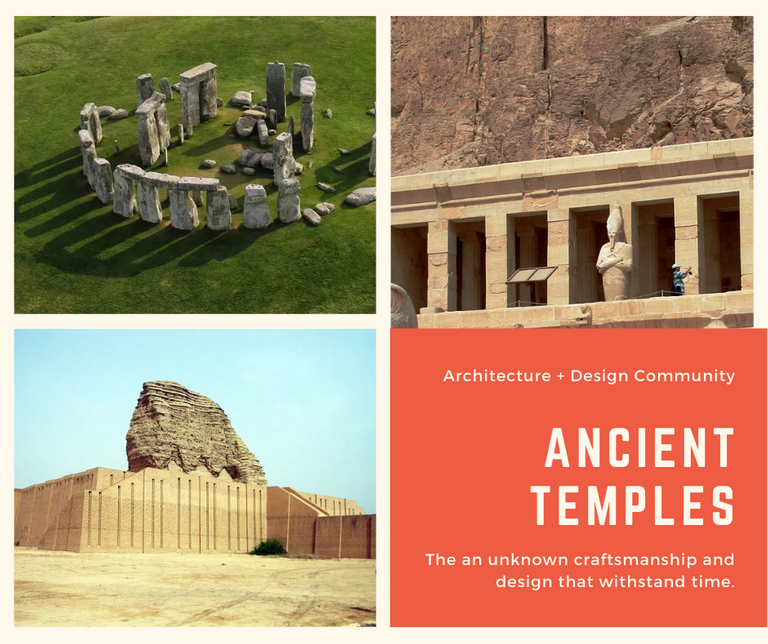
I am amazed at how our ancestors built ancient structures without the machinery and modern technology we have today. I can't fathom how they were able to lift tons of stones to build temples and pyramids. Archaeologists and scientists found out that our ancestors get the materials in far proximity from construction sites. Some materials are about a mile from the site. With all the constraints they have at the time, they managed to build impressive structures that some withstand the test of time.
Our ancestors highly valued religion. We can see it in how they build temples to honor the gods and deities, which they believe. It is not surprising that they constructed several temples with the best technology at that time. Several mysteries are surrounding how they built the structures and what technology they used. There are ancient temples that we don't know what purpose it plays and who were the creators while we have good documentation for others. Luckily for architecture and history buffs, some oldest temples are still around to date. These are three ancient temples that has interesting past and outstanding architecture.
Stonehenge, England
Stonehenge is one of the world's famous and mysterious structures that our ancestors built approximately 5,000 years ago. To date, it is not clear how they constructed it and for what purpose. It consists of a circular ditch with inner and outer banks. It is around since 2500 BC. We don't know what purpose it serves, but we assumed it is a temple for worshiping ancient earth deities or a burial complex. The temple has a symmetrical arrangement of bluestones that weigh up to four tons. It is a UNESCO World Heritage Site since 1986 but prior owned by a private estate.
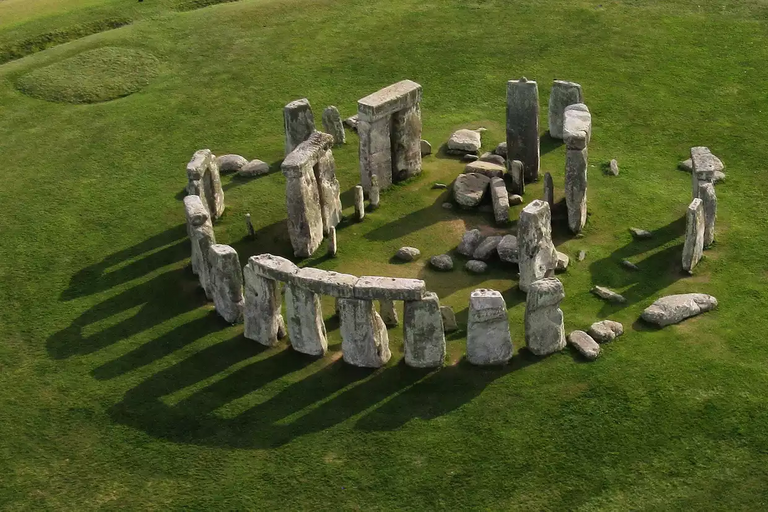 An aerial view of the Stonehenge (source)
An aerial view of the Stonehenge (source)In 2018, scientists from the University of Brighton conducted a chemical analysis on the core stone to find the origin of the sarsens. The sarsen stones share a similar chemical composition, 50 out of 52, and come from a common source. Professor David Nash shared that most sarsen stones are from West Wood near the Marlborough Downs, Wiltshire, which is around 15 miles north of Stonehenge.
Our ancestors designed with fine details. They aligned it to the solstices, sun paths, moon phases, paths of the stars, and predictions of eclipses. Steven Hawking suggests the Stonehenge is an attempt of our ancestors at time travel. Besides, it leaped the dead to eternal life. It is a similar obsession to the other great civilization of the time, Egypt.
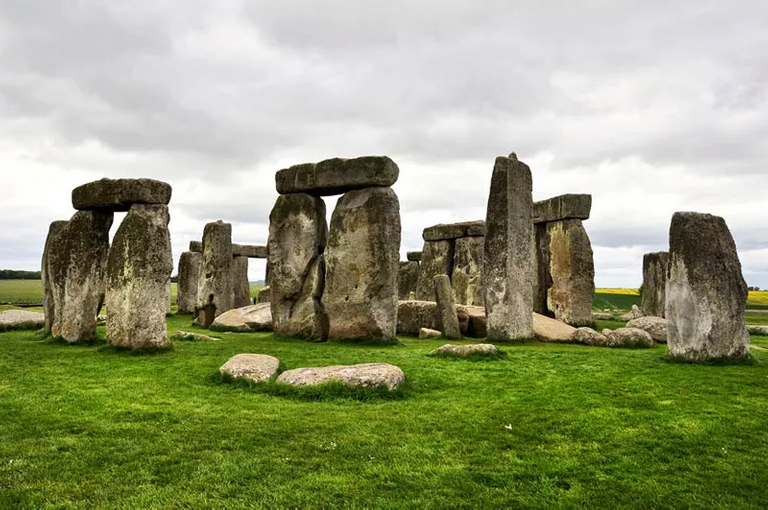
A sideview of the Stonehenge (source)
The Stonehenge has horizontal stone lintels to cap the outer circle that sits at the top of vertical slabs, trilithons, with a locked joint. They used Bluestones and Sarsens for the stones with a joint lock. Its external wall has sarsen sandstone which is up to 60-million-year old and over 40 tons in weight. They arranged the smaller bluestones in a circle inside the sarsen circle, which is a horseshoe arrangement. People thought the ancient stone circle to be a burial ground, which faces the midsummer sunrise and midwinter sunset.
Ziggurat of Ur, Iraq
King Ur-Nammu built the Ziggurat of Ur to dedicate to the god Nanna, which only the foundations remain to date. Saddam Hussein rebuilt some parts of the temple, including the staircase and lower façade in the 1980s. We can locate it at Dhi Qar Province, Iraq. It is a massive step pyramid that measures 64 m in length, 46 m in width, and 30 m in height. It has smaller platforms made of mud-brick core and covered by burnt brick. The burnt brick protects the interior from the elements.

The Ziggurat of Ur in 2010 (source)
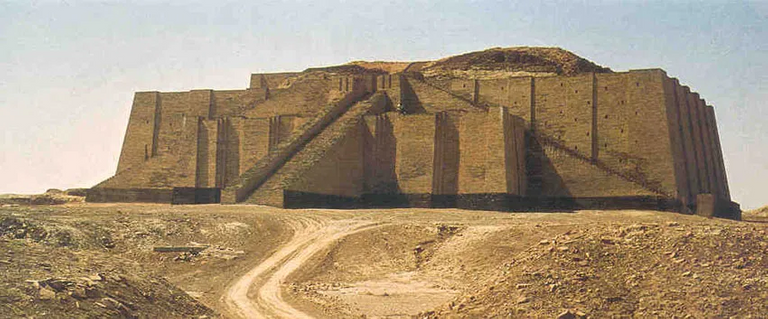
The Ziggurat of Ur in 2010 (source)
The people of Ur believed that Nana dwells in their ziggurat, which is why a single small shrine is at the summit of the ziggurat for the god. Ancient Mesopotamia believed that their gods are similar to mortals that have needs. They provide a bed-chamber for Nanna at the top of his ziggurat.
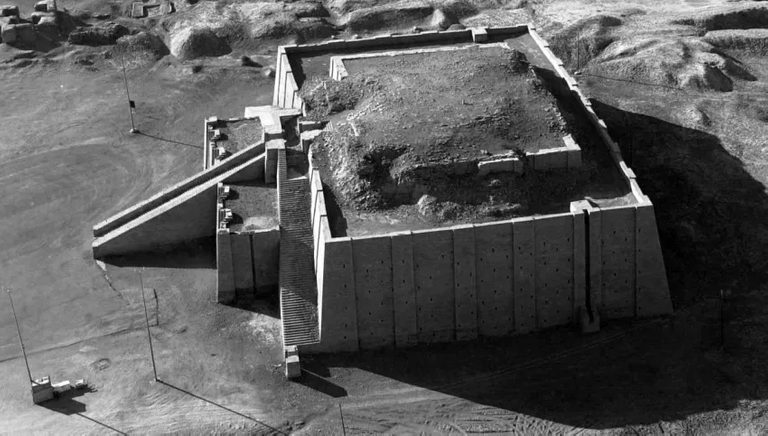
An aerial view of the Ziggurat of Ur in 2010 (source)
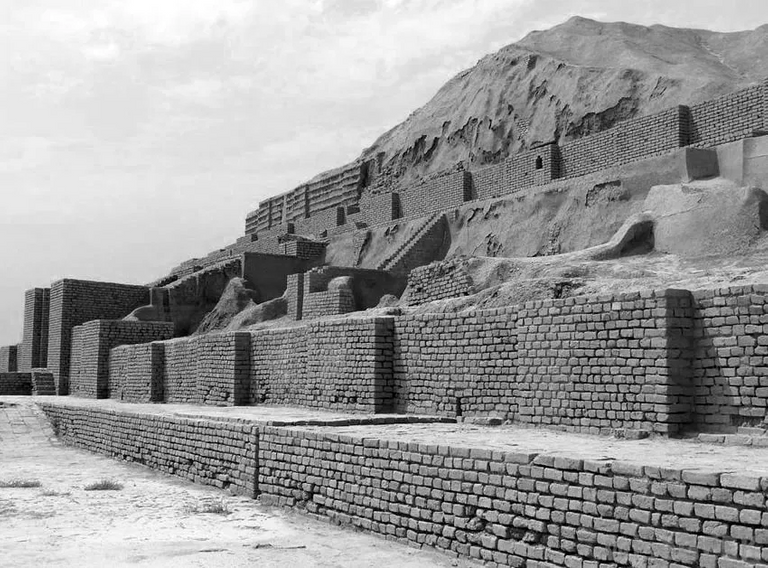
A side view of the Ziggurat of Ur in 2010 (source)
In ancient times, the ziggurat served as the administrative center for the city, which is a section of a temple complex. A maiden occupied the shrine each night, which the priests choose from among everyone. The kitchen is at the side stairs of the ziggurat at the base.
Temple of Hatshepsut, Egypt
Temple of Hatshepsut is an ancient funerary shrine in Egypt, which is also known Djeser-Djeseru. Royal architect Senenmut designed the temple, which has a lengthy colonnade and many terraces. Over the years, the original statues and ornaments have been stolen or destroyed. We can still see a statue depicting a female giving divine birth to a female pharaoh. It is one of the world's most appealing architectural masterpieces. Besides, it is more noteworthy due to the woman who commissioned it.
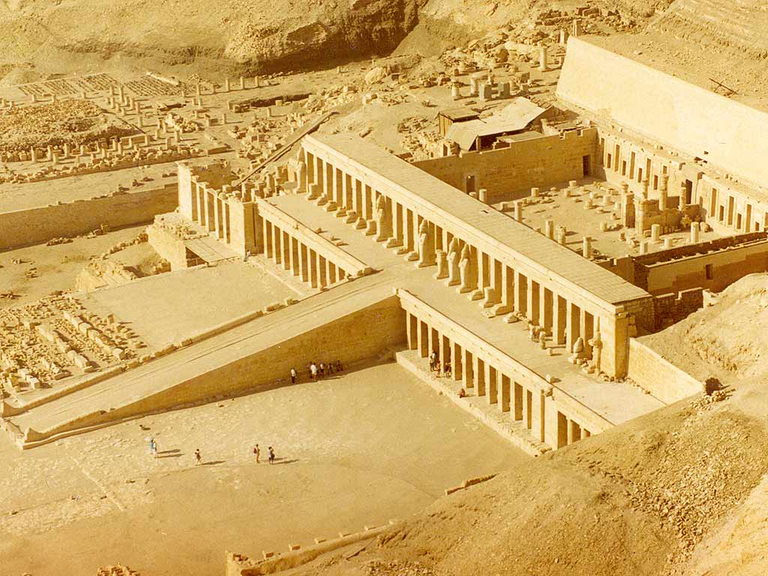
An aerial view of Temple of Hatshepsut, Egypt (source)
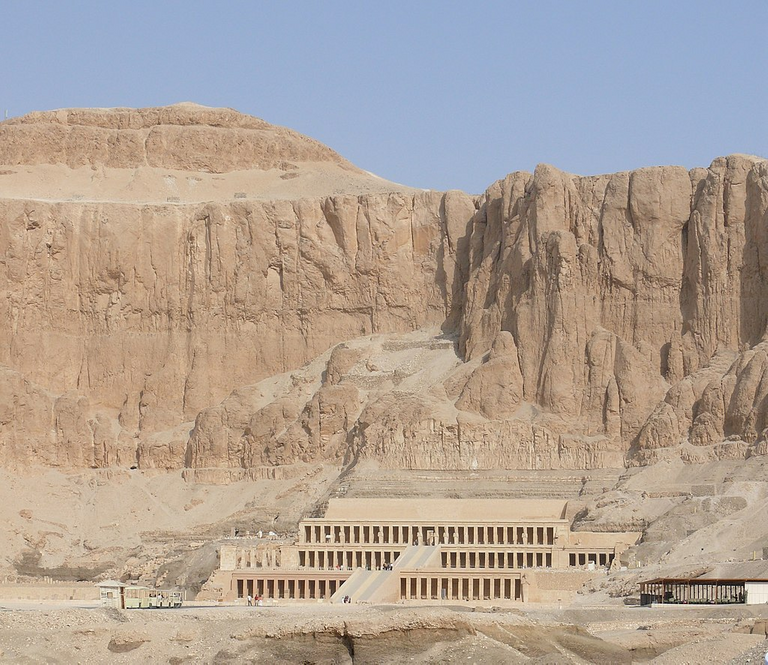
An wide shot of Temple of Hatshepsut, Egypt (source)
The temple constructed in the seventh century showed stepped platform, pillared porticoes, and vibrant reliefs against the desert cliff backdrop. The relief sculpture in the temple showed the tale of the divine birth of a female pharaoh. Between 1923 to 1931, Egyptologist Herbert E. Winlock of the Metropolitan Museum of Art led an excavation and restoration of the site. His team excavated fragments of Pharaoh Hatshepsut destroyed statues. It dumped into the pits in front of the temple.
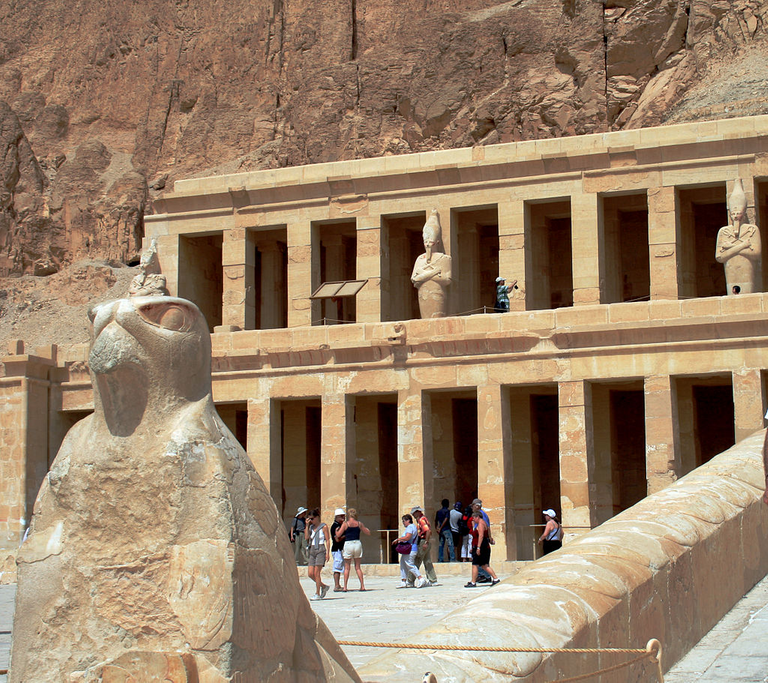
South-western colonnade in the second court (looking west) (source)
The temple featured a large stone ramp from the first courtyard to the second level with lush gardens and an elaborate entrance pylon flanked by towering obelisks. At the ground level, there is an archway on either side that led to down alleys. The entrance has lion statues. On the second floor, two reflecting pools and sphinxes lining the pathway, leading to the third floor. The temple featured colonnades and detailed reliefs, paintings, and statuaries.
Again, our ancestors highly valued religion, which is why they build several temples in honor of the gods and deities. Several questions arise from these temples. How they constructed the structures with the fine details in them? What technology did they use? To date, we have no answer to the question, but we can see that our ancestors are master craftsmen and architects. The details of these temples show how proficient they are. If we can uncover how they built these temples, we can build structures that stand the test of time.
Note: The cover image is created by the author using Canva.
Congratulations @juecoree! You have completed the following achievement on the Hive blockchain and have been rewarded with new badge(s) :
Your next target is to reach 50000 upvotes.
You can view your badges on your board and compare yourself to others in the Ranking
If you no longer want to receive notifications, reply to this comment with the word
STOPCheck out the last post from @hivebuzz:
Support the HiveBuzz project. Vote for our proposal!
I thin the fine details were fleshed out in the designs fairly early and it required the craftsman to know everything. Whereas today, we end up end up using machines and other tools to make exact measurements.
Also if we compare the amount of time the ancestors spent was probably years if not decades to fully build out some of these structures. Every single piece of the puzzle needed to be designed exactly as intended.
If we can uncover how they built and designed it, it has great implication to architecture, engineering and construction. I agree that they was able to build it for a longer time.
Of all the ancient structures, Stonehenge is one of the places that I would like to visit.
I love the Stonehenge too. It's an incredible structure with a lot of mysteries involve.
Ancient temples are certainly historical masterpieces of architecture that kept us scratching our heads until today. With all this noisy hype about aliens helping in the construction of these wondrous works from the past, we are sometimes pushed to believe that this is real. What about you @juecoree, what are your thoughts on this?
Some people believe that aliens helped our ancestors building these structures because their argument is that it was somehow portrayed in ancient writings. That is where the hype is coming. For example, ancient Egyptians foretold about a being from above that enables them to built the pyramid. We aren't sure if it is alien or metaphor for god. For me, I am on the in between, neither yes and no. I can't ignore the ancient writings hence it maybe a recorded history. Oleksii Novikov, the world strongest man, can lift about 537.5 kg. One sarsen stone weighs up to 40 tons and sourced about 15 miles from the site. That is hundred of Noviko to lifts one stone. If they did not have any help, it isn't possible with the technology at the time. Furthermore, their are no factual and scientific evidence of an Alien existence in history. Maybe, few years from now we will know how they are able to build it. It is still an open question that everyone wants an answer.
Exactly, it's just a matter of time when we'll uncover the truth behind all of the hype. Many thanks for your personal views on this!
Some kind of advanced technology in ancient times... That is my theory. This technology must have been lost in time. I'm not talking about laser beams or something fantastic, but something else that these civilizations have developed. Perhaps the library of Alenjandria contained writings on this, but unfortunately it was burned. Or maybe our body was stronger thousands of years ago, and it was easier for us to work the stone, who knows...
I agree that our ancestor must have a technology that is lost in time. Maybe, somewhere in uncovered ruins we can get the lost technology.
Can't believe how intelligent and hard working our ancestors were. the beauty of these structures are mesmerizing specially those carved from a cave. Amazing article!
Many such medieval structures stands tall and strong in my country too. they all are the examples on how architecturally advances those humans from past were.
That was a wonderful article throwing a limelight on such interesting subject.
Keep flourishing.
I hope we can learn how our ancestors able to build these structures. It will be revolutionary.
Hello @juecoree, just dropping by to congratulate you for being in the 22nd Edition of Architecture Brew.
The Architecture+Design Community is an Active Member of the OCD Communities Incubation Program
Find out more about the community comprehensive guidelines